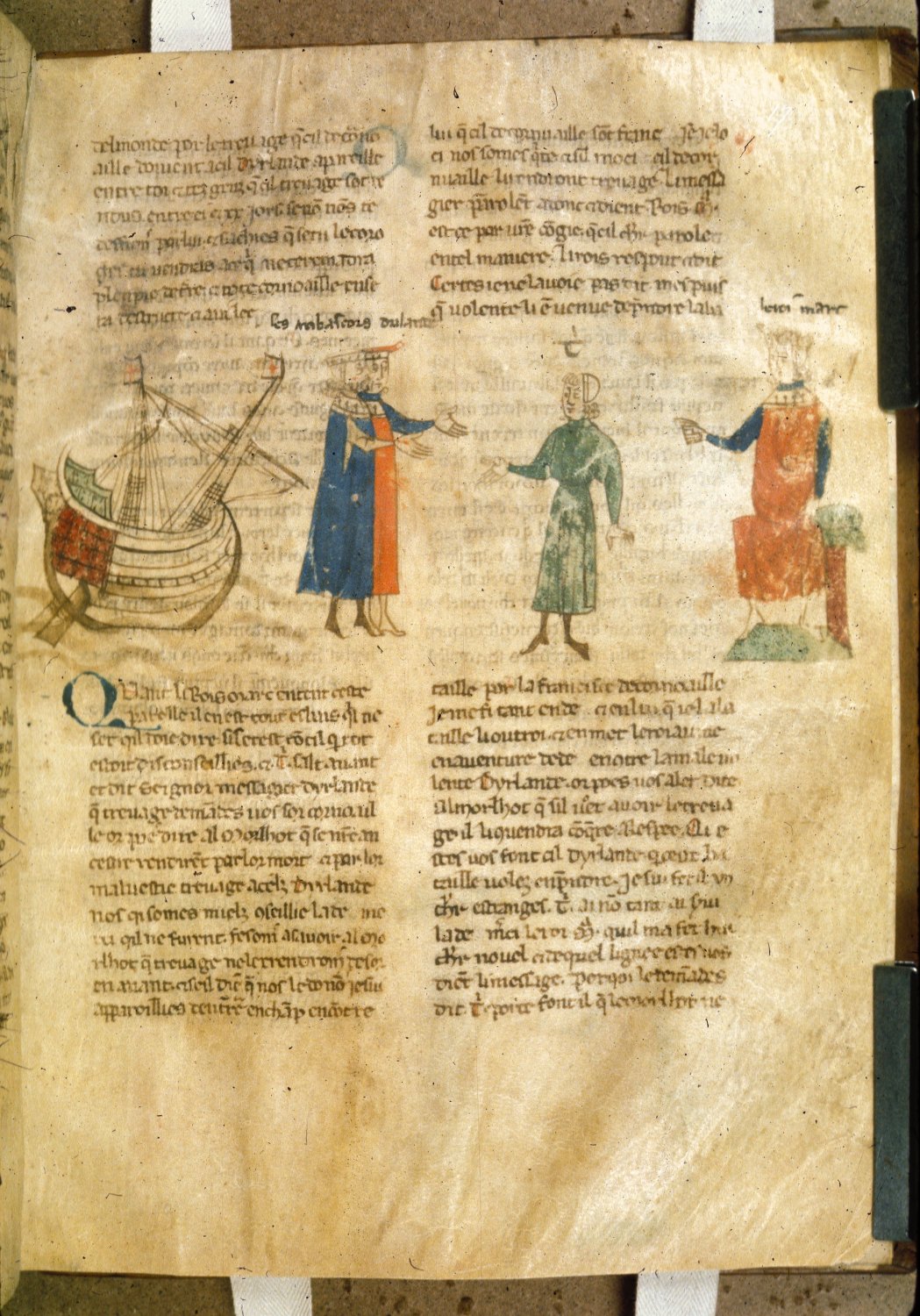Manuscripts and periods of production
The prose Tristan survives whole or in part in more than 80 medieval manuscripts, and the list continues to lengthen sporadically as further fragments are discovered. The earliest copy of certain date is Paris BnF f.fr. 750, which was signed by its copyist, Petrus de Tiergevilla, in 1278. The place of production of this volume, which preserves a lengthy section from the first half of the romance, is uncertain, but on the basis of its illustration it can be safely attributed to either Italy or Outremer (Avril & Gousset 1984, 163-4).
The Tristan was almost certainly being copied earlier than 1278 in the east and north-east of the oïl zone. Among the earliest are the fragments Salzburg UB M I 376 and Paris Beaux-Arts Masson 787 (both copied in the mid-13th c.), and several manuscripts localised by Alison Stones to between Cambrai and Thérouanne on art historical grounds (London BL Add. 5474, Part 2 of Paris BnF f.fr. 758, Paris BnF f.fr. 776, cf. Stones 1993 and Lancelot-Graal Project). The 'complete' manuscript used for the edition of the 'Vulgate' text of the prose Tristan (Vienna ÖNB 2542) is likewise of Picard provenance, probably dating to c. 1300. By 1325, manuscripts of the prose Tristan were also being produced with links to Paris (e.g. Vatican BAV Pal. Lat. 1964, illustrated by the Master of Thomas de Mauberge, cf. Rouse & Rouse 2000, II:179).
The majority of the surviving manuscripts from the early period of production (16), however, were copied in Italy. Most notable among these is a group of seven volumes, mostly preserving extracts from the beginning and end of the Tristan, that were copied in the same Genoa-Pisa atelier at the end of the 13th c. or the beginning of the 14th c. (Aberystwyth LlGC 446 E, London BL Harley 4389, Modena BEU α.T.3.11, Paris BnF f.fr. 760, Paris BnF f.fr. 1463, Venice BNM fr. Z XXIII, Florence BNL Ashb. 123, cf. Cigni 1993). The other copies made in Italy around this date are probably northern Italian, including the extract in Vatican BAV Barb. Lat. 3953, which was copied in the Veneto.
To judge by the surviving manuscripts, relatively few copies of the prose Tristan were made in France during the remainder of the 14th c. Production in Italy, however, continued apace, particularly in Lombardy and the Veneto (see, for example, London BL Add. 23929). The pair of volumes known as Paris BnF f.fr. 756-757 deserve special mention here as they constitute the most complete text of the version known as 'V.I.' (see: Textual tradition). BnF f.fr. 756-757 has traditionally been considered a Neapolitan production for the Carafa family, but both location and dedicatee have recently been queried (Cigni 2012).
French production resumed with renewed vigour in the 15th c. Many of the volumes dating from this period were made for the most renowned bibliophiles of the day, and sumptuously illustrated by the likes of the Master of the Yale Missel, who worked between Bourges and Tours c. 1470 (Geneva BG fr. 189, New York Morgan M 41, Paris BnF f.fr. 102). Other 15th-c. productions, in both France and Italy, sought to restore or fill in the gaps in older copies to produce a more complete text. Aberystwyth LlGC 5667 E provides a fascinating example: its first part, penned in Italy in the 15th c., was attached to an early 14th-c. volume of northern French production, resulting in a composite book destined for the shelves of the Visconti library.
To: Textual tradition.